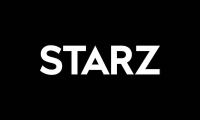New Reverse Mortgage Hits the Market
Senior homeowners will get less money from the new federally backed loan product, but they will also pay less in fees.

EDITOR'S NOTE: This article was originally published in the January 2011 issue of Kiplinger's Retirement Report. To subscribe, click here.
If you're shopping for a reverse mortgage, you have a new choice to mull over. The federal government has expanded its home equity conversion mortgage, or HECM, to include a product with a smaller loan amount and lower fees.
The new HECM Saver made its debut in fall 2010. The traditional HECM is now known as the HECM Standard. Both types allow homeowners age 62 and older to tap their home equity. The loan must be repaid with interest when the homeowner dies, sells the house, or moves out for 12 months or more.
From just $107.88 $24.99 for Kiplinger Personal Finance
Be a smarter, better informed investor.

Sign up for Kiplinger’s Free Newsletters
Profit and prosper with the best of expert advice on investing, taxes, retirement, personal finance and more - straight to your e-mail.
Profit and prosper with the best of expert advice - straight to your e-mail.
Borrowers will receive about 10% to 20% less in proceeds with the Saver than with the Standard -- but at a cheaper cost. "The new Saver has virtually eliminated the upfront insurance premium," says Eric Declercq, vice-president for the reverse-mortgage operations of MetLife Bank.
When you take a federally backed reverse mortgage, you pay an upfront mortgage insurance premium. The premium is not based on the loan amount. Rather, it's based on the "maximum claim amount," which is the home's appraised value, the sales price or the government's lending limit of $625,500 -- whichever is lowest.
Smaller Loans and Smaller Fees
For the HECM Saver, the initial insurance premium is 0.01% of the "maximum claim amount," while it remains 2% for the Standard. The upfront premium on a Saver loan with a $300,000 maximum would be $30, while the Standard premium would be $6,000. "It's a big savings for consumers," says Jeff Lewis, chairman of Generation Mortgage.
A homeowner will qualify for a smaller loan with the HECM Saver than with the Standard. According to AARP's reverse-mortgage calculator, a 75-year-old in Arlington, Va., with a home worth $500,000 could get a lump sum of about $258,000 from a fixed-rate Saver or a lump sum of about $328,000 from a fixed-rate Standard.
A borrower could choose an adjustable rate for either HECM. The initial proceeds are lower: The same 75-year-old borrower would receive an initial amount of about $227,000 with the adjustable-rate Saver and about $306,000 with the adjustable-rate Standard.
Currently, you can find fixed-rate HECMs with interest rates from 4.99% to 5.25% and adjustable-rate HECMs from 2.5% to 3%. Interest rates for the Saver are about 0.25% higher than for the Standard.
With a fixed-rate HECM, you must take the full lump sum that you're eligible to receive. Lewis expects a fixed-rate borrower would likely go with the HECM Standard to get the maximum amount of money.
But for some homeowners, the full draw of a fixed-rate HECM could be more money than they want. Adjustable-rate HECMs offer a little more control over the amount borrowed. These loans give you the option of taking the money as a line of credit, which you can tap as you need the money, or in monthly payouts. Lewis expects those borrowers interested in an adjustable-rate HECM would gravitate to the Saver and its smaller loan amount. Declercq says that the Saver accounts for one out of five reverse-mortgage originations at MetLife Bank.
In addition to the initial insurance premium, other upfront costs include a loan origination fee and closing costs, such as title insurance. Some of these fees have been reduced or eliminated by lenders in the past year to drum up business. Those discounts may disappear when market conditions improve.
HECMs also impose an annual insurance premium, which is charged monthly based on the amount withdrawn. In October, the government raised the previous annual rate of 0.5% of the outstanding loan balance to 1.25%. "That is pretty significant," says David Certner, director of legislative policy for AARP. The 1.25% rate applies to both the Saver and the Standard.
On an outstanding balance of $250,000, the annual premium for one year would have been about $1,250 at the old rate. At the new rate, that cost jumps to $3,125 for one year.
Profit and prosper with the best of Kiplinger's advice on investing, taxes, retirement, personal finance and much more. Delivered daily. Enter your email in the box and click Sign Me Up.

-
 Amazon Resale: Where Amazon Prime Returns Become Your Online Bargains
Amazon Resale: Where Amazon Prime Returns Become Your Online BargainsFeature Amazon Resale products may have some imperfections, but that often leads to wildly discounted prices.
-
 457 Plan Contribution Limits for 2026
457 Plan Contribution Limits for 2026Retirement plans There are higher 457 plan contribution limits in 2026. That's good news for state and local government employees.
-
 Medicare Basics: 12 Things You Need to Know
Medicare Basics: 12 Things You Need to KnowMedicare There's Medicare Part A, Part B, Part D, Medigap plans, Medicare Advantage plans and so on. We sort out the confusion about signing up for Medicare — and much more.
-
 The Seven Worst Assets to Leave Your Kids or Grandkids
The Seven Worst Assets to Leave Your Kids or Grandkidsinheritance Leaving these assets to your loved ones may be more trouble than it’s worth. Here's how to avoid adding to their grief after you're gone.
-
 SEP IRA Contribution Limits for 2026
SEP IRA Contribution Limits for 2026SEP IRA A good option for small business owners, SEP IRAs allow individual annual contributions of as much as $70,000 in 2025, and up to $72,000 in 2026.
-
 Roth IRA Contribution Limits for 2026
Roth IRA Contribution Limits for 2026Roth IRAs Roth IRAs allow you to save for retirement with after-tax dollars while you're working, and then withdraw those contributions and earnings tax-free when you retire. Here's a look at 2026 limits and income-based phaseouts.
-
 SIMPLE IRA Contribution Limits for 2026
SIMPLE IRA Contribution Limits for 2026simple IRA For 2026, the SIMPLE IRA contribution limit rises to $17,000, with a $4,000 catch-up for those 50 and over, totaling $21,000.
-
 457 Contribution Limits for 2024
457 Contribution Limits for 2024retirement plans State and local government workers can contribute more to their 457 plans in 2024 than in 2023.

